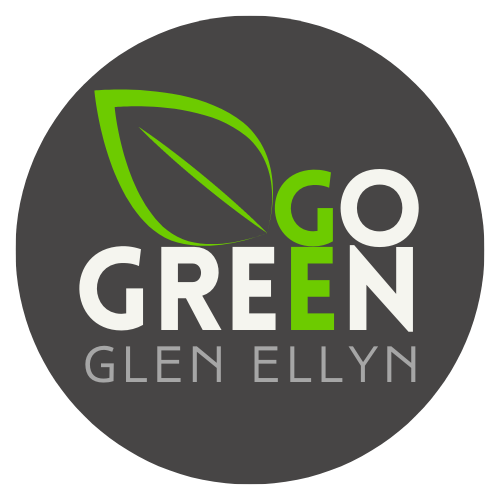Get the poop, er scoop on your pet’s enviro-impact!
Americans love their pets -- two thirds of US households have one! Having a dog dissolve into wags when you come home, or a cat jump in your lap for a snuggle is reason enough to have a furry friend in your life. But like all life choices, pet ownership creates an environmental impact. Read on to get all the poop on how to reduce your pet's environmental footprint, er....pawprint!
LEARN
The 90 million dogs and 74 million cats in the US are indeed part of our families, but they also can have a big environmental impact, and we are not just talking poop! To be a wee bit greener, pet owners can make choices for responsible waste disposal, eco-friendly or recycled products for pet gear, and sustainably-sourced pet food. Let's dig into specifics of becoming greener pet owners to help improve our world for ourselves and our furry friends.
Manage poop with aplomb Dogs produce up to 12 million tons a waste a year and cats nearly 4 million tons (included litter).Thi can account for up to 12% of household waste! Of course most of this waste ends up in landfills creating methane and likely shedding microplastics. Let's dig in about how to best take care of our pets 'business.'
Dogs. There is a long-running debate about the best way to pick up and dispose of dog poop. Let's evaluate the choices for disposing:
Plastic Bags. These are not a good option as they can take hundreds of years to decompose if buried... and they shed microplastics. (you are refusing plastic bags at the grocery so it's unlikely you even have enough, right? ;-)
Bio-degradable bags. There are no standards for bio-degradable waste bags and their chemical contents vary widely, which suggest these are not the best option.
Compostable bags are the most likely to actually break down in the soil, even if some tested show a small level of microplastic contamination. For those who use bags, these are your best bet.
Composting -- it is allowed by the USDA to use composted dog waste on non-food gardens, but this means composting it yourself, as most composting companies will not take pet waste.
Flushing the waste in your toilet (just the poop not the bag!). This is acceptable in many places and saves it from going to the landfill. Dog waste does not break down as well as human, so this may not be a good solution for older systems and definitely not for those with their own septic system.
Cats. Cat waste can often carry parasites or other pathogens and care must be taken with disposal, particularly for pregnant women and those with compromised immune systems. Cat litters can also be problematic. Many clay litters are produced from ecologically damaging strip mining and chemicals added may be harmful for pets and humans to breath when dust is kicked up. There are more ecological alternatives to litter for cat owners to explore. Here a few from Spruce pet. Unlike dog waste, you cannot compost cat waste (or flush it!) given the presence of pathogens. For bagging cat waste, please see dog bag options above.
Of note, there is a non-profit whose mission is to reduce pet waste in landfills called EnviroPet Waste Network.
Select greener food options.
Choosing pet foods that use ethically sourced ingredients, eco-friendly packaging, and innovative ingredients like plant-based proteins. Consider foods made with fish rather than beef, which has a higher ecological impact.
Look at pet food companies that audit their supply chain to ensure humane and sustainable practices. Look for certifications from reputable third-party organizations like the ASPCA's Shop With Your Heart program, Animal Welfare Approved by A Greener World, Certified Humane, and Global Animal Partnership
Consider buying in bulk to reduce packaging waste (Some pet food bags are recyclable but most are not)
Choose eco-friendly pet accessories.
Toys: Look for hemp, natural rubber and fabric toys rather than plastic. Your dog chewing a plastic toy to bits makes the macro plastic into micro-plastics!
Bowls: Choose stainless, ceramic or bamboo. They clean up well, last a long time and don't shed plastic into your pet's food.
Bedding: Upcycle something you already have rather than buying new. An old blanket, cushion or towel as a bed is also easier to keep clean.
Collars: Consider getting a collar made from leather, hemp or bamboo.
Shampoo: Choose organic, nontoxic, such as those listed here.
Monitor outdoor etiquette
Reduce your impact: Walk to dog park rather than drive, pick up pet waste, take care not to damage trees or plants, or let your pets impact local wildlife.
If your dog goes into water sources, keep them out if they have just had a tick or flea treatment as this can hurt or even kill aquatic life in that ecosystem. Avoid contributing to river or lake erosion by monitoring where your dog enters or exits a body of water.
Keep your cat indoors, or if it goes outside, put a bell on its collar to help reduce impact on backyard wildlife like songbirds. Free-range household cats kill up to 4 billion birds a year in the US and have caused or contributed to 14% of modern bird, mammal and reptile extinctions in the world.
It takes just a few small steps to lessen the environmental impact of your furry friend! If you have other ideas, Contact Us.
DO
Rescue a New Friend!
For our 'do' this week, may we suggest: Add a rescue or a foster animal to your family! Make sure you find a reputable place -- no kill shelters and non-profits are your first and best place to look.
If you can't add to your family, consider donating food, blankets, towels, rejected (non-used) toys or outgrown dishes to one of these shelters. Or volunteer to walk dogs or hang out with cats!
Some that foot the bill in the area:
